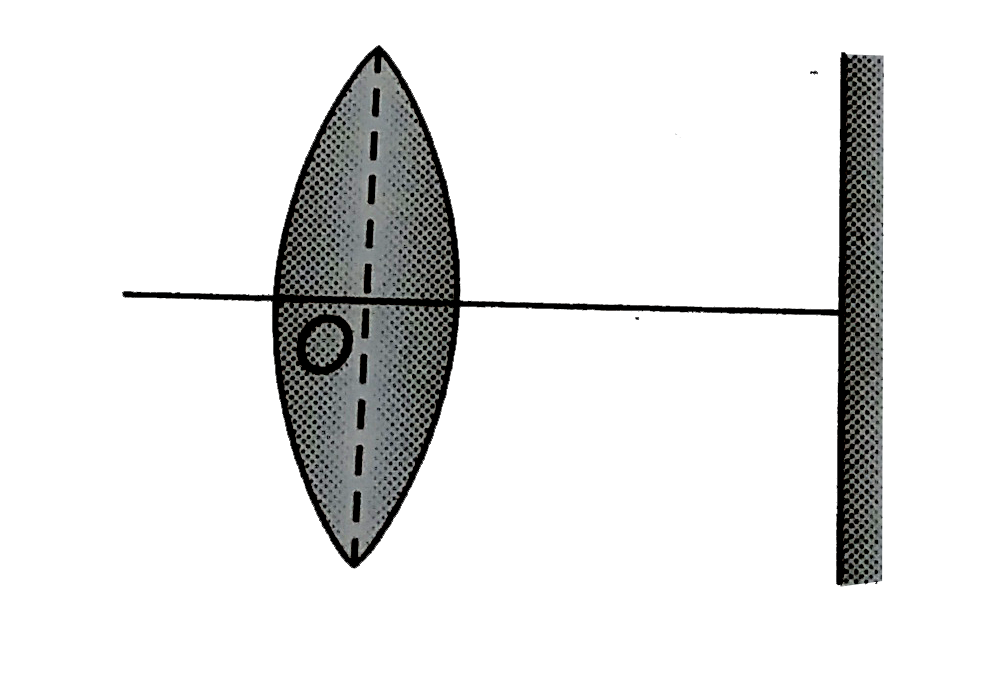Assertion : For real objects, image formed by a convex mirror always lies between pole and focus.
Reason : When object moves from pole to infinity, its image will move from pole to focus.
(a) If both Assertion and Reason are true and the Reason is correct explanation of the Assertion.
(b) If both Assertion and Reason are true but Reason is not the correct explanation of Assertion.
(c) If Assertion is true, but the Reason is false.
(d) If Assertion is false but the Reason is true.
The correct Answer is:A, B
To solve the question regarding the assertion and reason related to the image formation by a convex mirror, we will analyze both statements step by step.
1. Understanding the Assertion:
- The assertion states that for real objects, the image formed by a convex mirror always lies between the pole (P) and the focus (F).
- In a convex mirror, the image formed is always virtual, upright, and diminished, regardless of the position of the object.
2. Analyzing the Image Formation:
- When an object is placed in front of a convex mirror, the rays of light diverge after reflecting off the mirror.
- The extensions of these diverging rays appear to meet at a point behind the mirror, which is the virtual image.
- This virtual image is always located between the pole and the focus of the mirror.
3. Understanding the Reason:
- The reason states that when the object moves from the pole to infinity, its image will move from the pole to the focus.
- As the object moves closer to the mirror (from a far distance towards the pole), the image also moves closer to the mirror.
- The image will always remain virtual and will approach the focus as the object approaches the mirror.
4. Conclusion:
- Both the assertion and the reason are true.
- The reason correctly explains the assertion because it describes the behavior of the image as the object moves closer to the mirror.
5. Final Answer:
- Both the assertion and the reason are true, and the reason is the correct explanation of the assertion.
- The assertion states that for real objects, the image formed by a convex mirror always lies between the pole (P) and the focus (F).
- In a convex mirror, the image formed is always virtual, upright, and diminished, regardless of the position of the object.
- When an object is placed in front of a convex mirror, the rays of light diverge after reflecting off the mirror.
- The extensions of these diverging rays appear to meet at a point behind the mirror, which is the virtual image.
- This virtual image is always located between the pole and the focus of the mirror.
- The reason states that when the object moves from the pole to infinity, its image will move from the pole to the focus.
- As the object moves closer to the mirror (from a far distance towards the pole), the image also moves closer to the mirror.
- The image will always remain virtual and will approach the focus as the object approaches the mirror.
- Both the assertion and the reason are true.
- The reason correctly explains the assertion because it describes the behavior of the image as the object moves closer to the mirror.
- Both the assertion and the reason are true, and the reason is the correct explanation of the assertion.
Topper's Solved these Questions
- REFLECTION OF LIGHTBOOK - DC PANDEY ENGLISHCHAPTER - REFLECTION OF LIGHTEXERCISE - Exercise Level 1 Objective
12 Videos
- REFLECTION OF LIGHTBOOK - DC PANDEY ENGLISHCHAPTER - REFLECTION OF LIGHTEXERCISE - Exercise Level 1 Subjective
17 Videos
- REFLECTION OF LIGHTBOOK - DC PANDEY ENGLISHCHAPTER - REFLECTION OF LIGHTEXERCISE - Introductory Exercise
1 Videos
- RAY OPTICSBOOK - DC PANDEY ENGLISHCHAPTER - RAY OPTICSEXERCISE - Medical entrance gallary
76 Videos
- REFRACTION OF LIGHTBOOK - DC PANDEY ENGLISHCHAPTER - REFRACTION OF LIGHTEXERCISE - Level 2 Subjective
21 Videos
Similar Questions
Nature of image of a real object formed by convex mirror is always
View SolutionList four characteristics of the image formed by a concave mirror of focal length 40 cm when the object is placed in front of it at a distance of 20 cm from its pole.
View SolutionAssertion Image formed by a convex mirror can never be real.
Reason Convex mirror is diverging in nature.
View SolutionDiscuss the position and nature of image formed by a convex mirror when an object is moved from infinity towards the pole of mirror.
View SolutionAn object is moving towards a convex mirror with a constant velocity. P is the pole of mirror.

View SolutionThe distance between the focus and pole of the mirror
View SolutionAssertion: Minimum distance between object and its real image by a convex lens is 4f.
Reason: If object distance from a convex lens is 2f, then its image distace is also 2f.
View Solution
The distance between a convex lens and a plane mirror is 10 cm. The parallel rays incident on the convex lens after reflection from the mirror forms image at the optical centre of the lens. Focal length of lens will be
View SolutionThe minimum distance between an object and its real image formed by a convex lens is
View SolutionDraw the image formed by a convex mirror when the object is kept in front of the mirror and write the characteristics of the image.
View Solution
